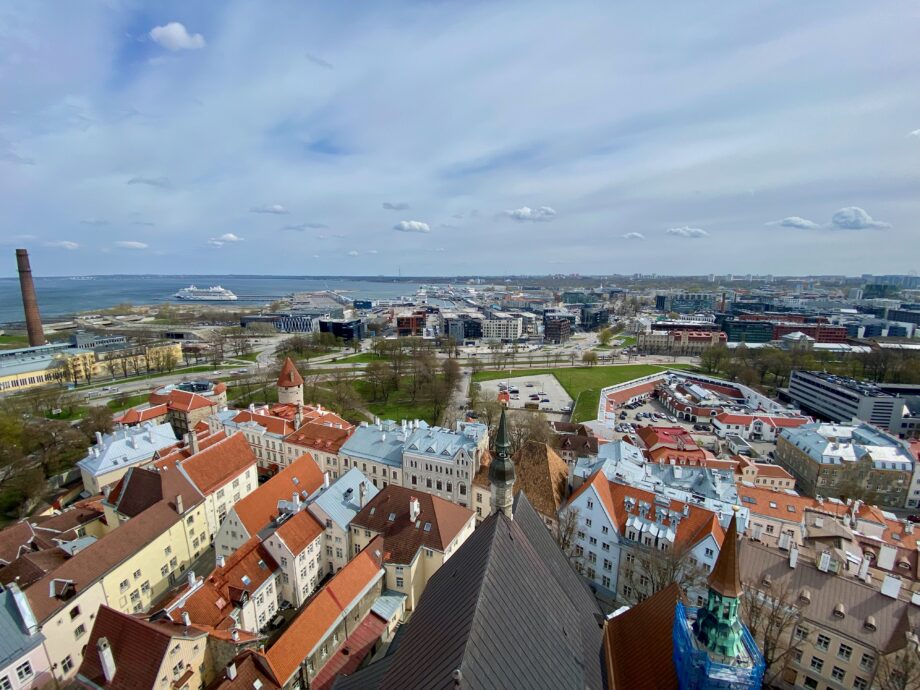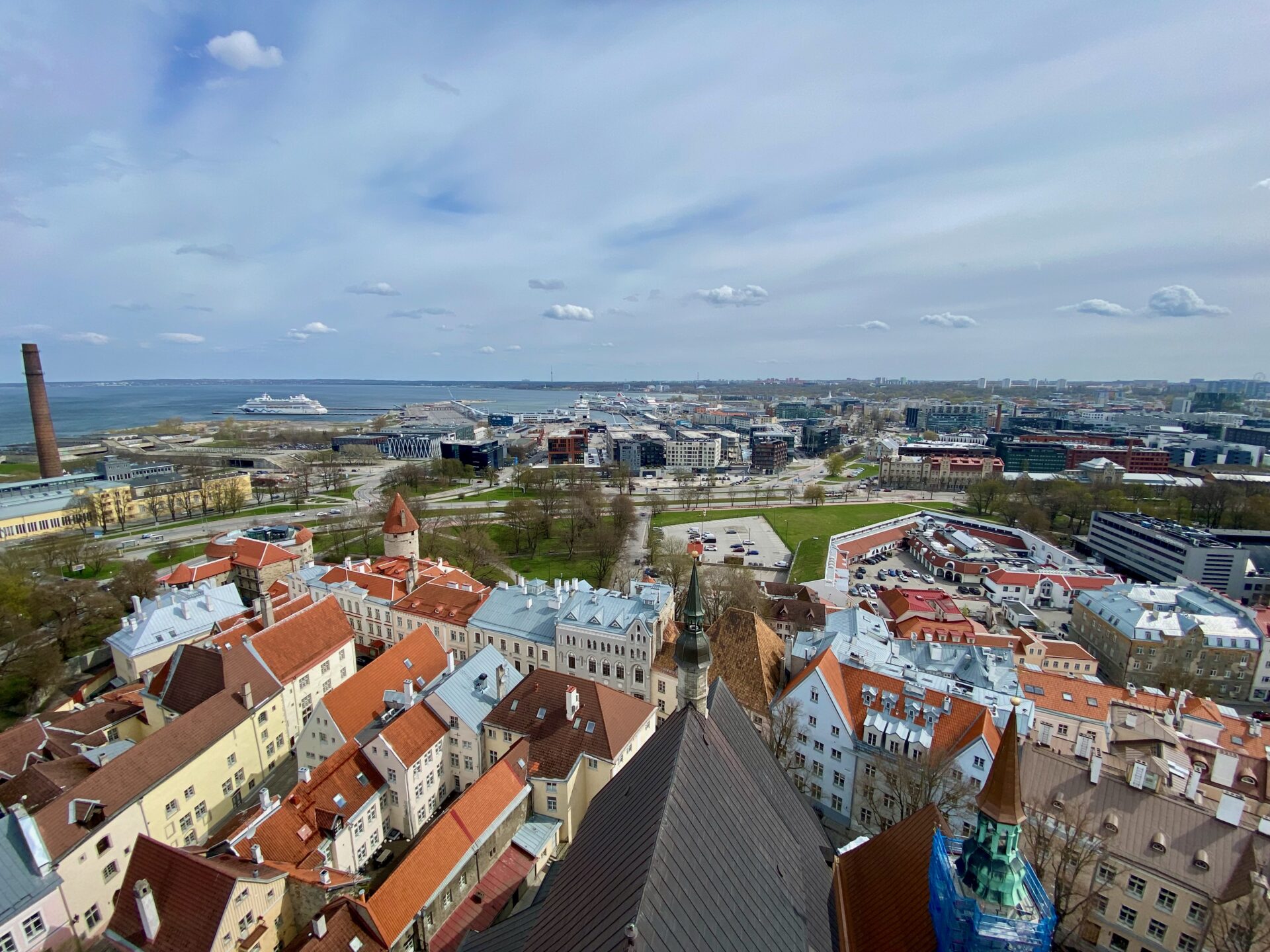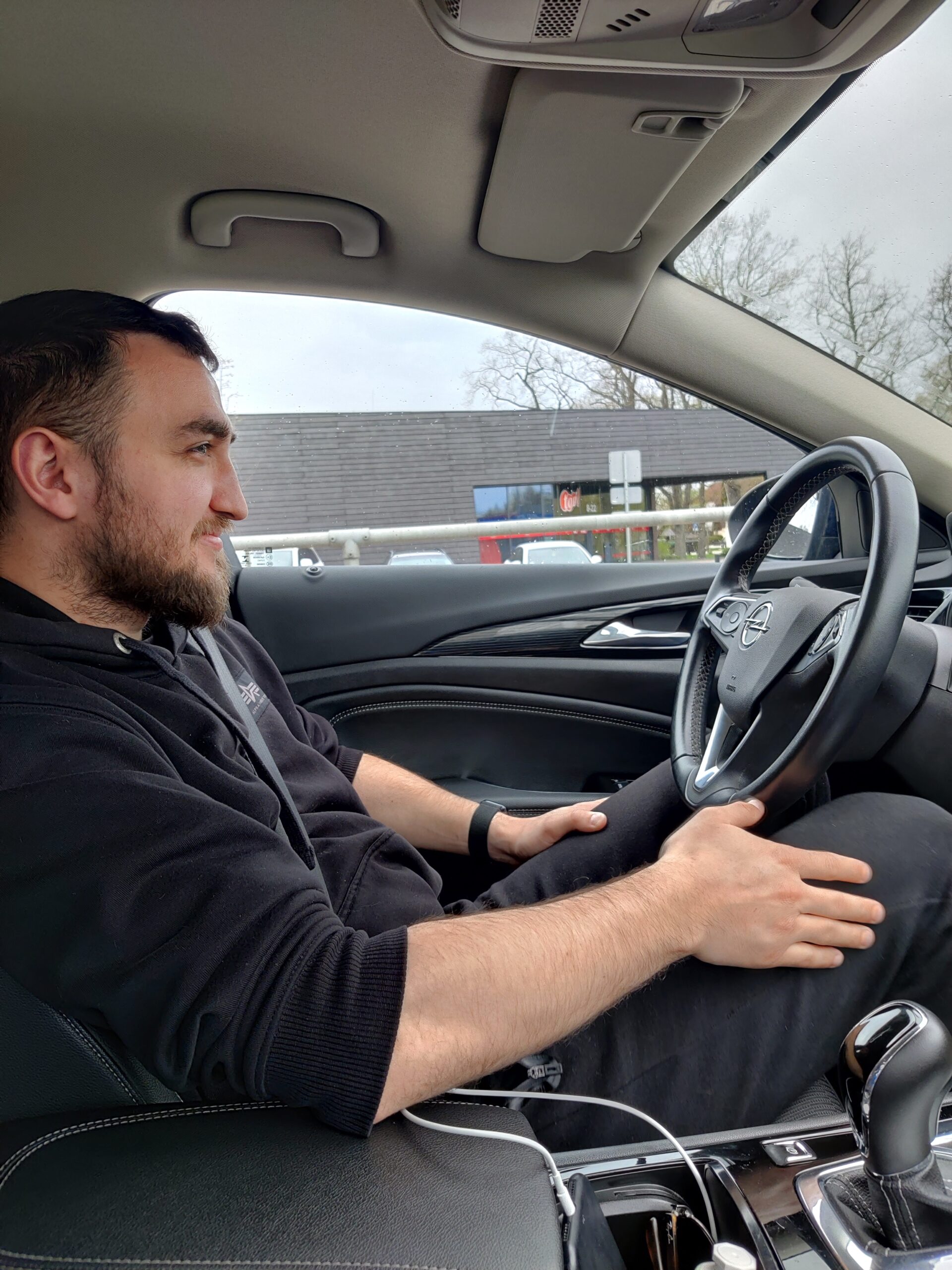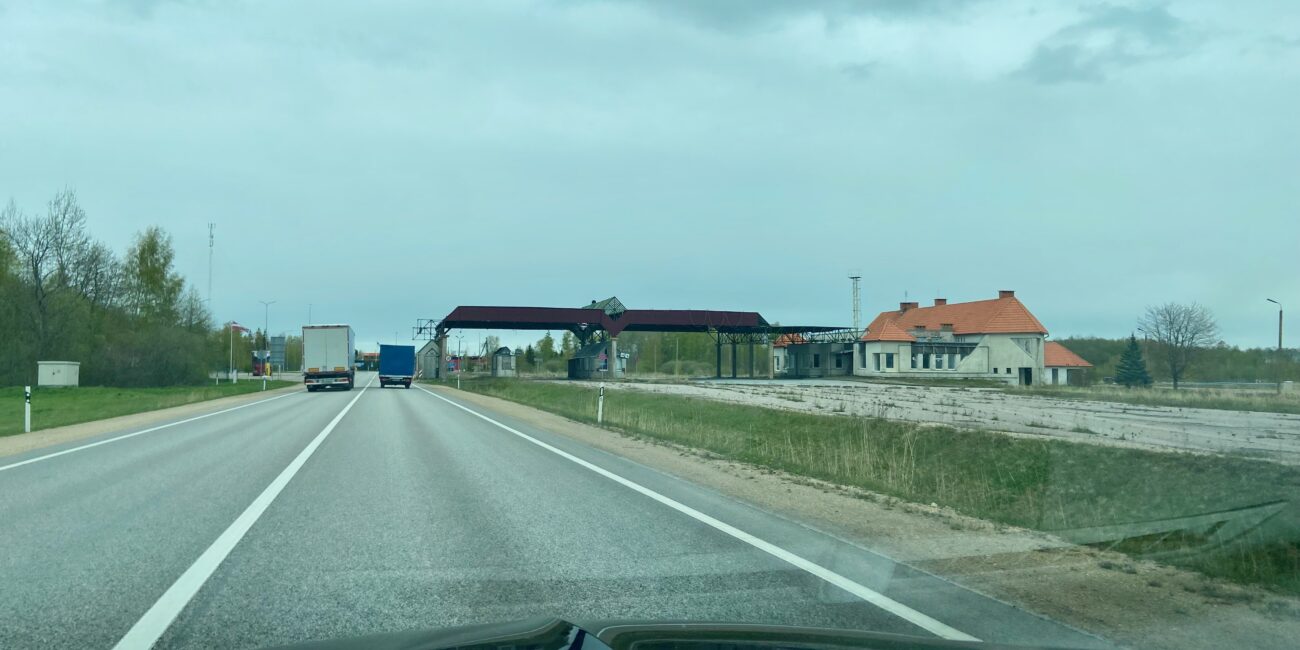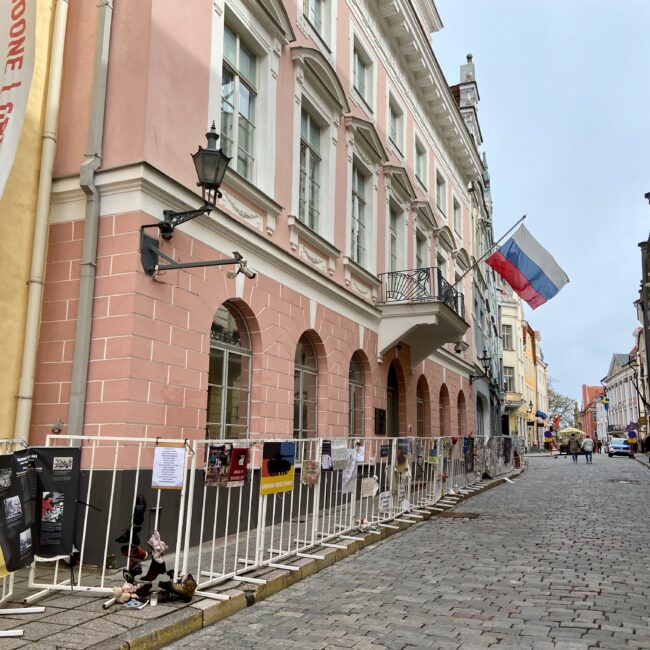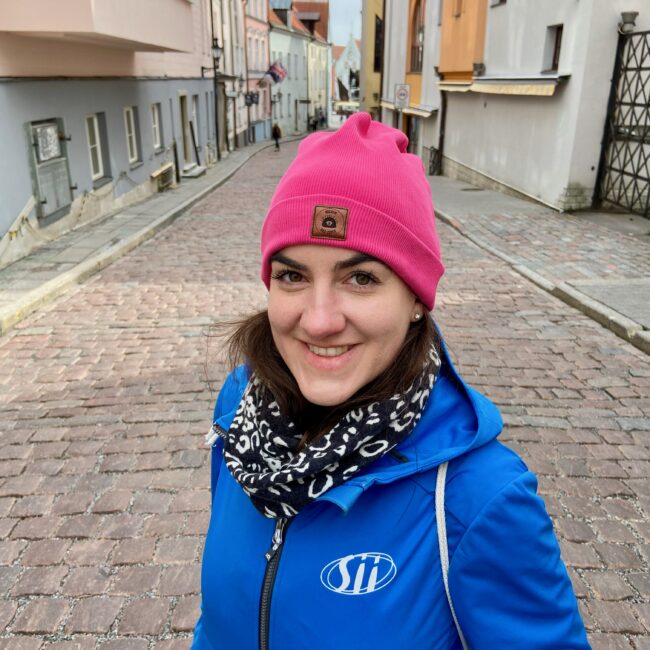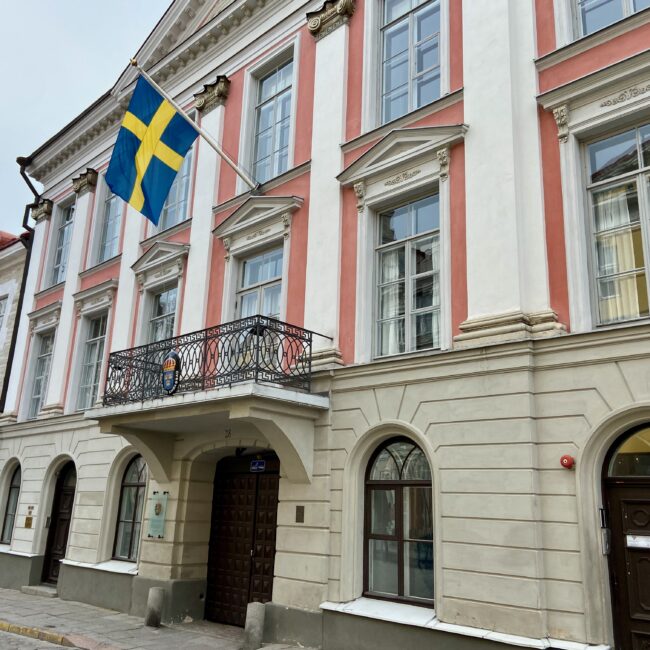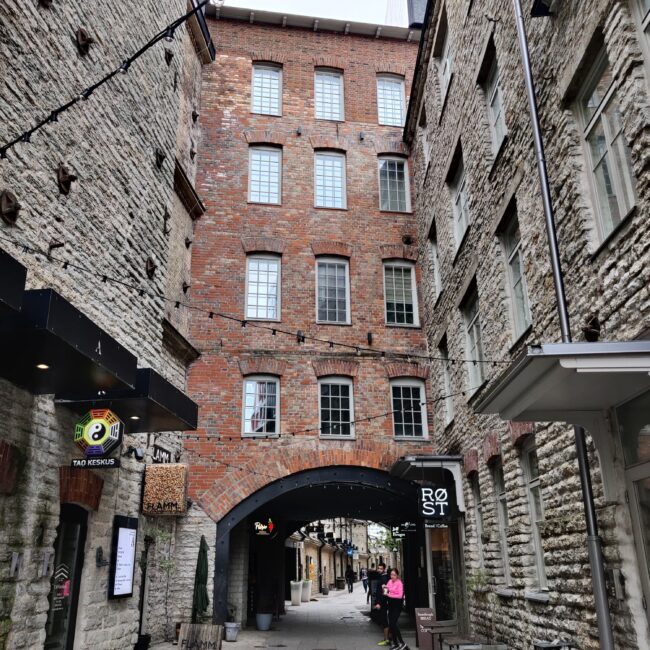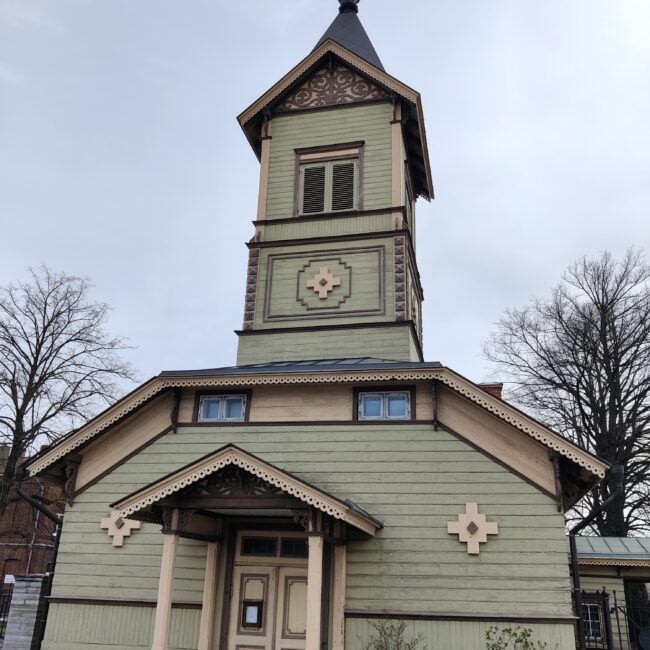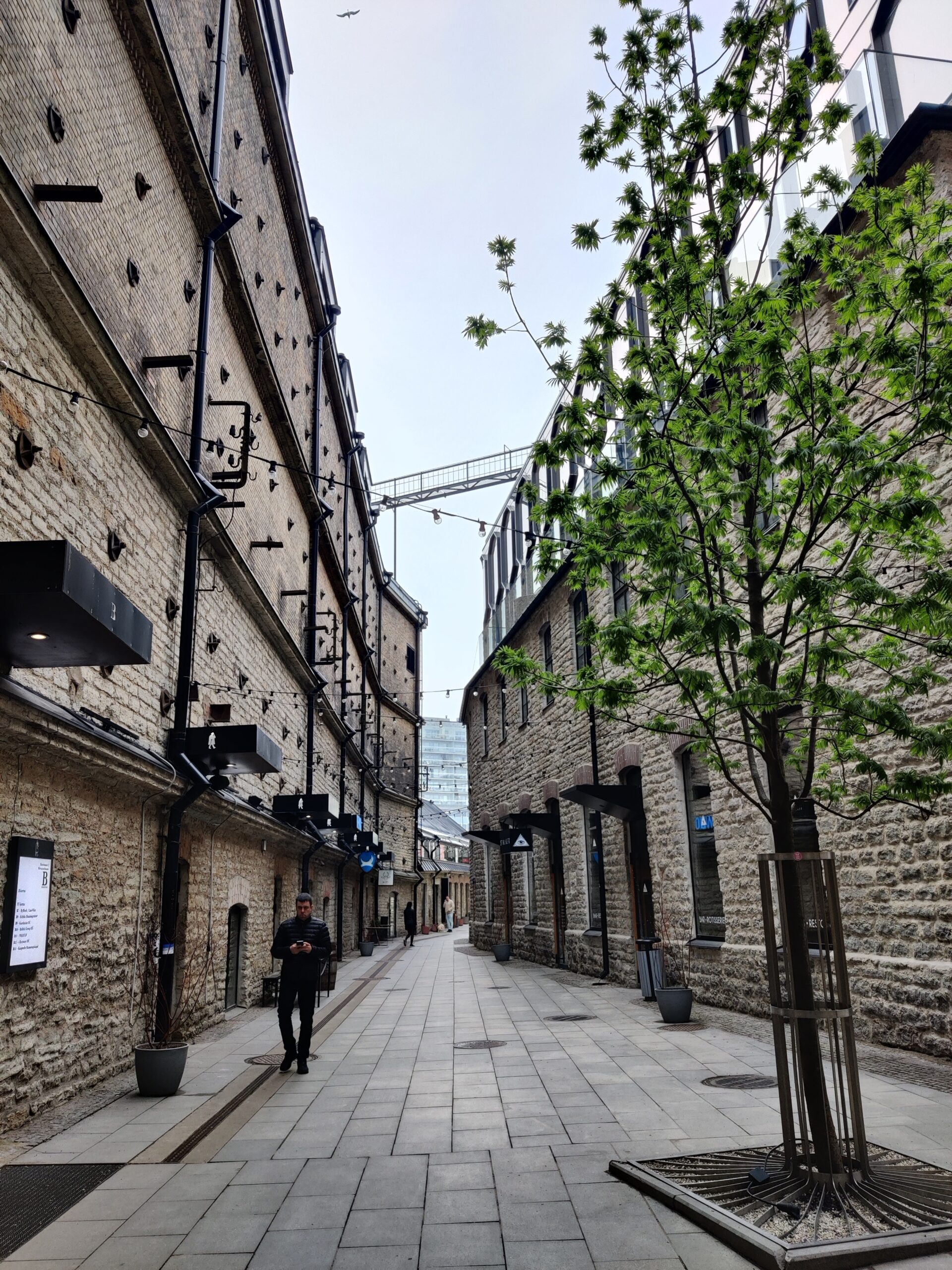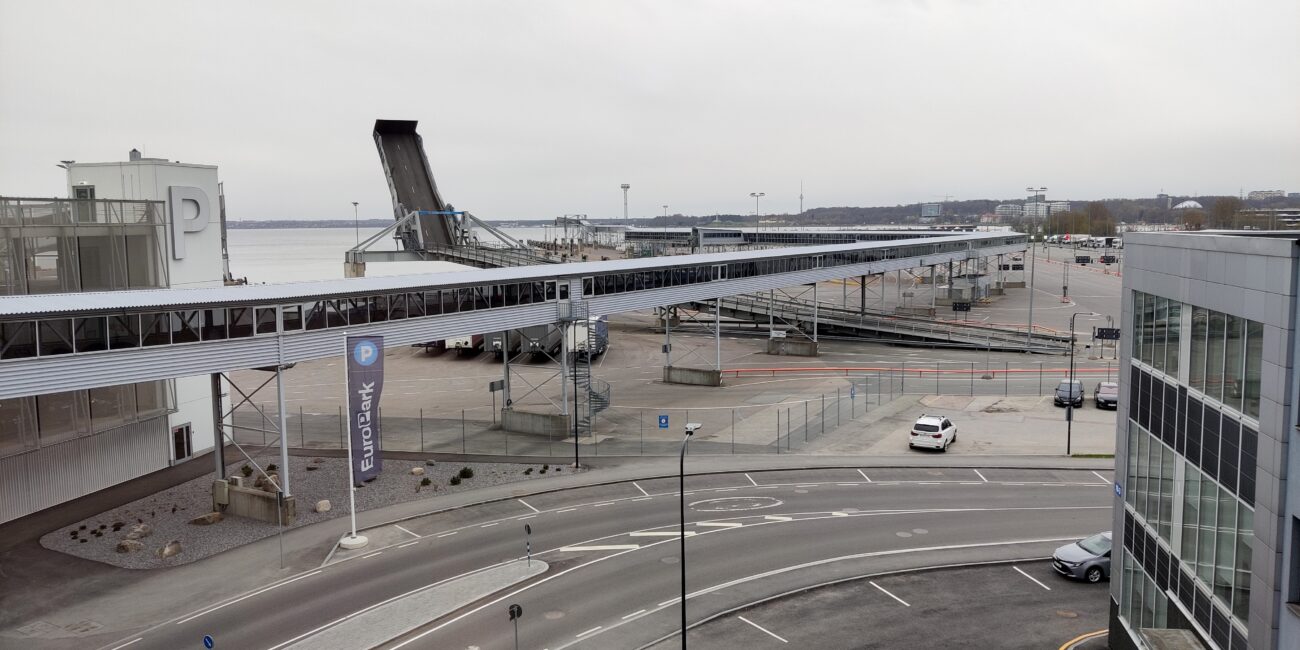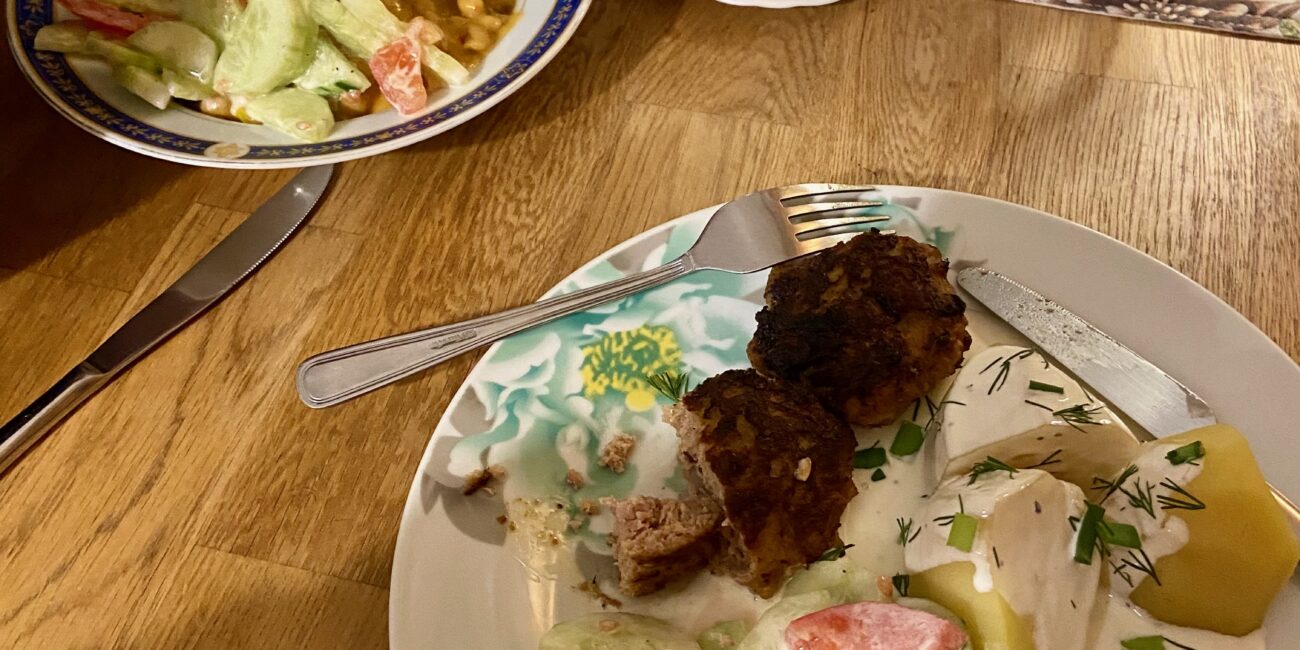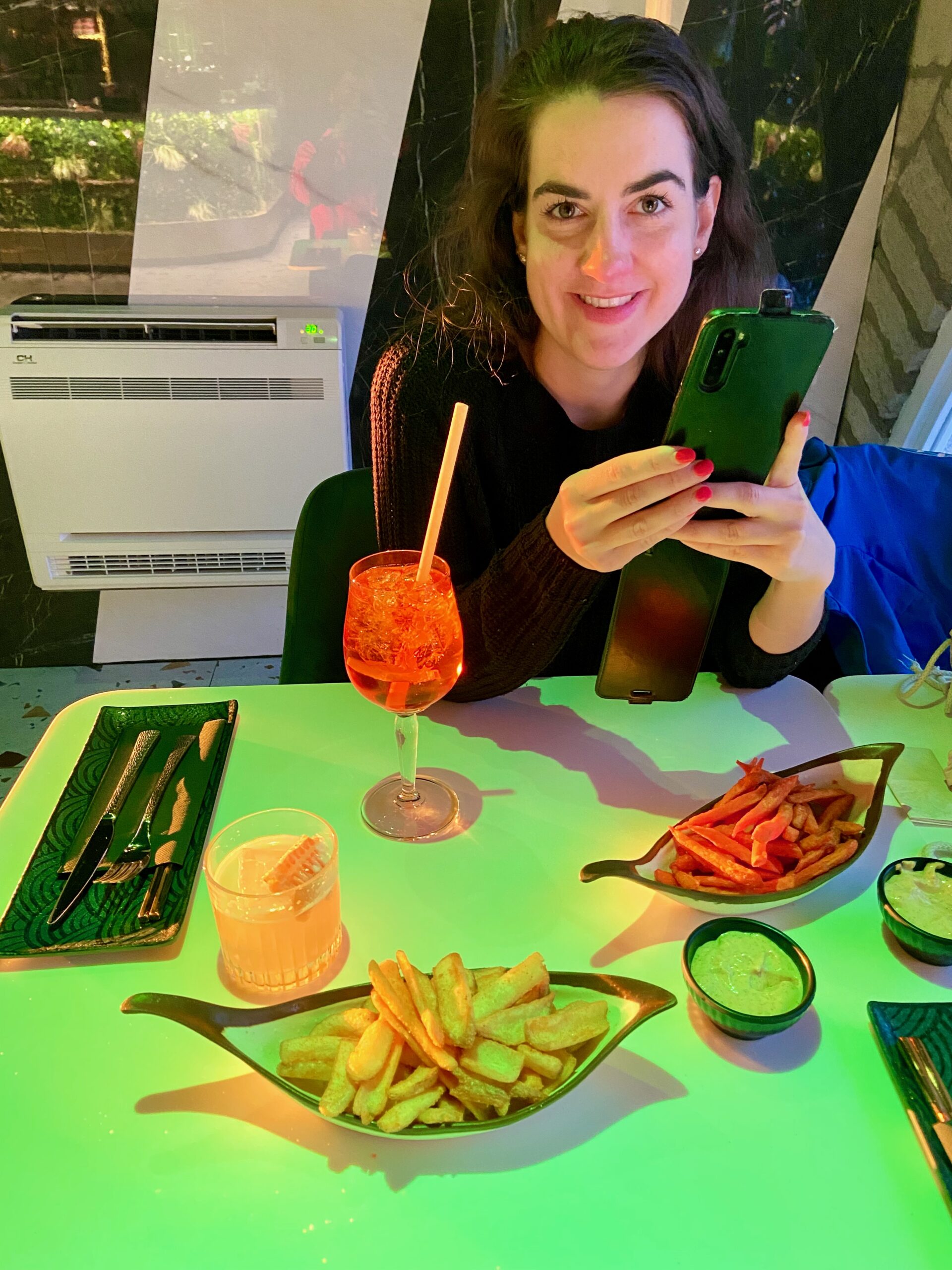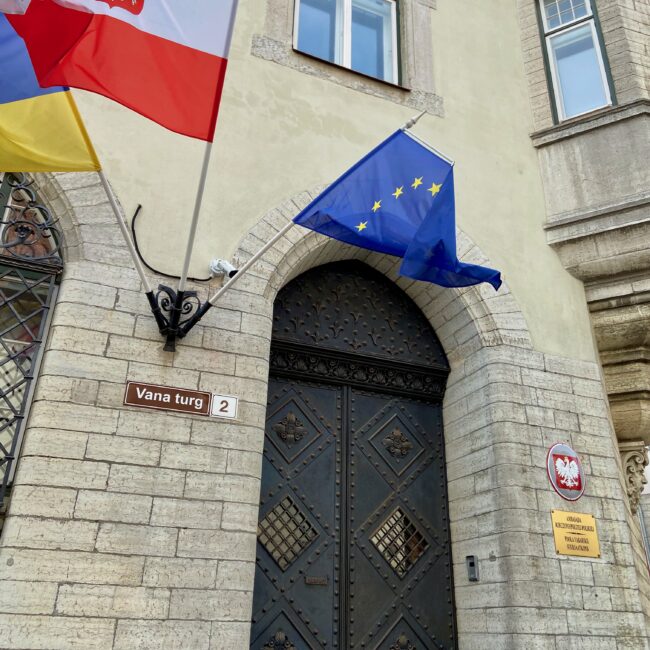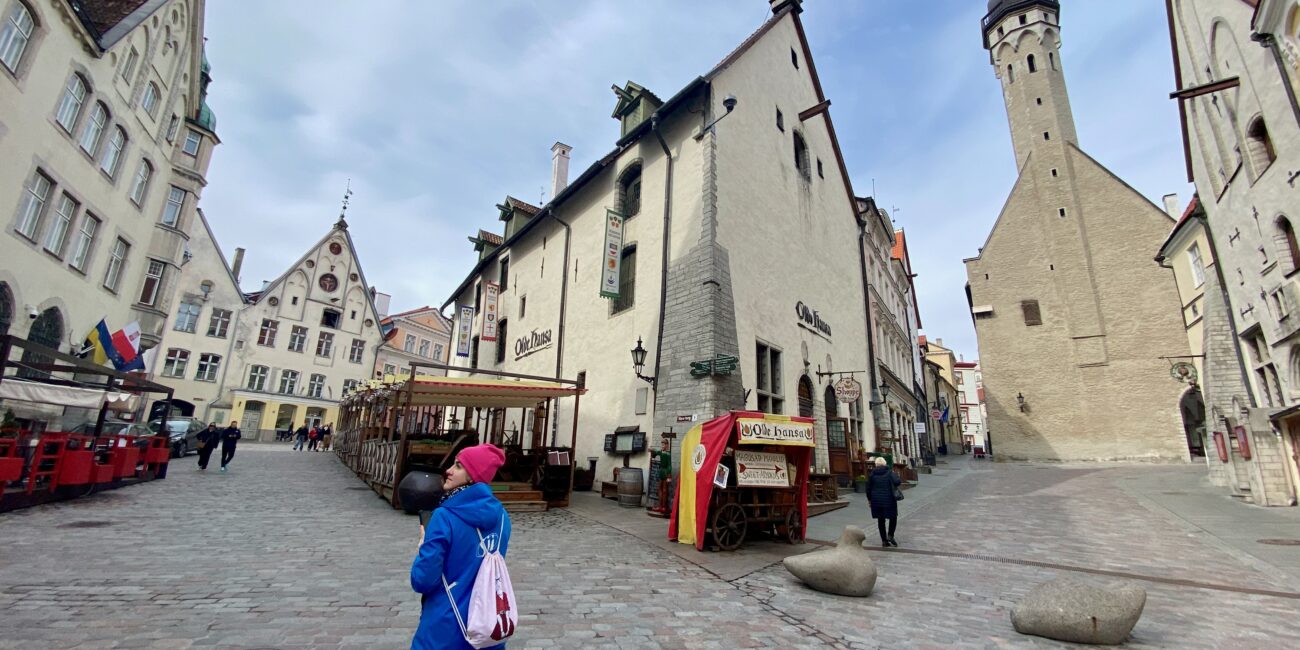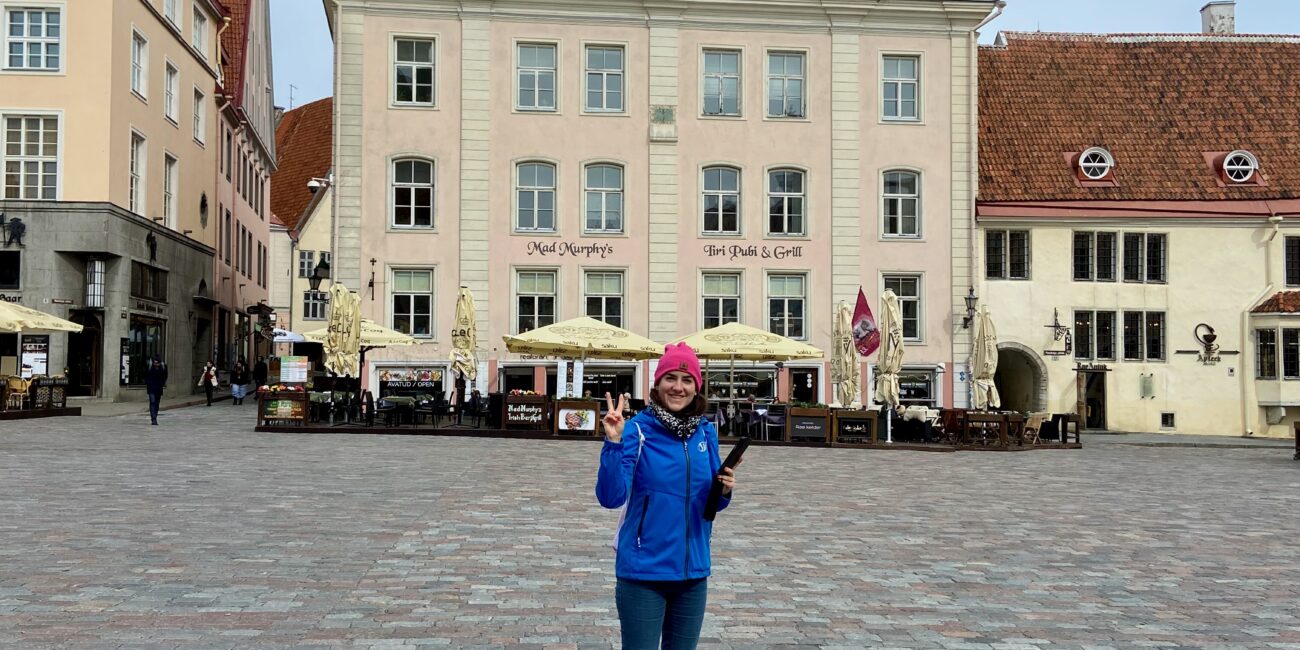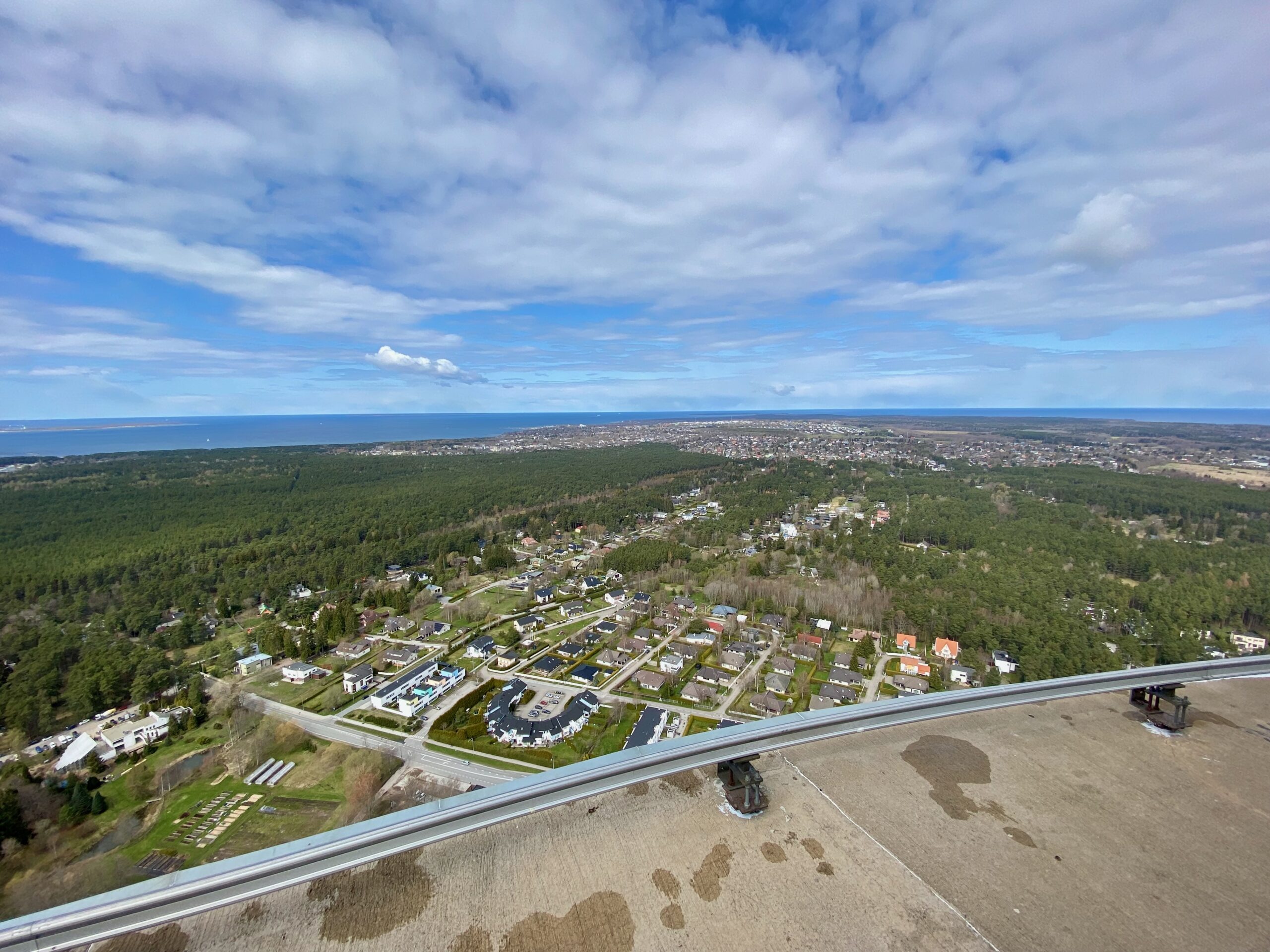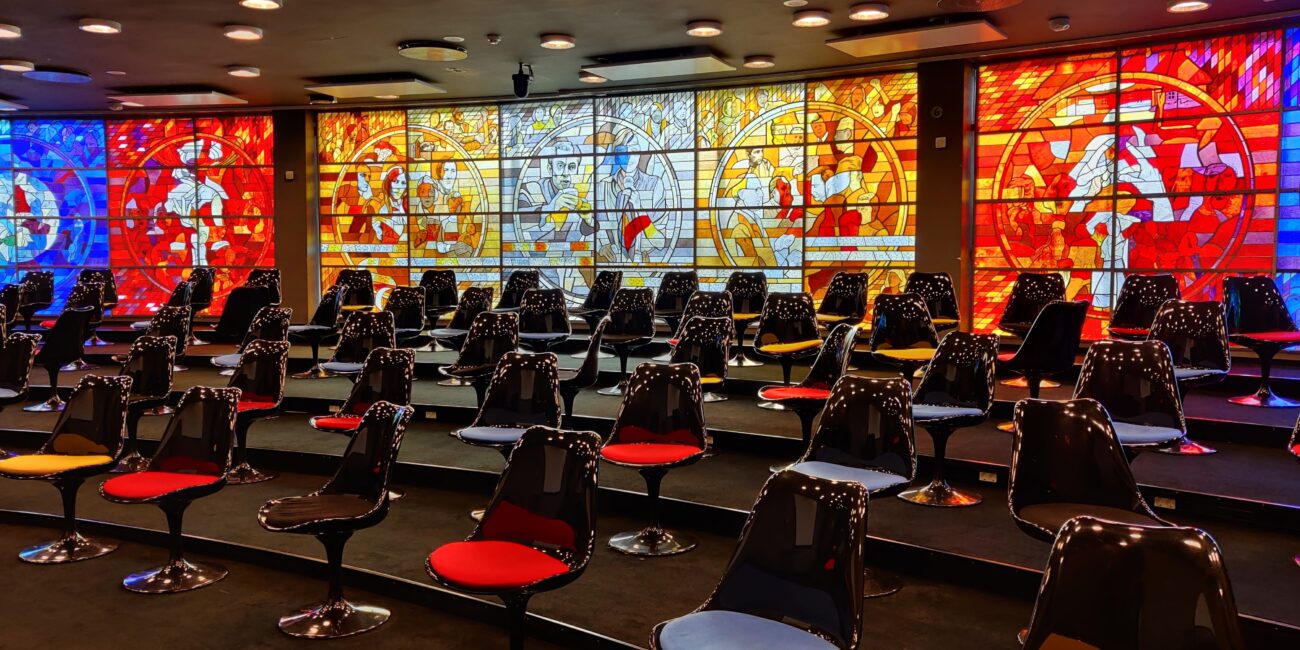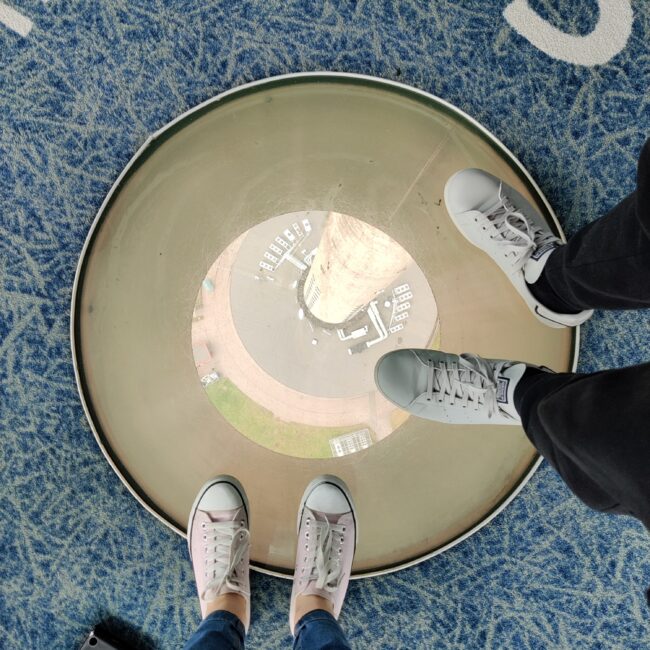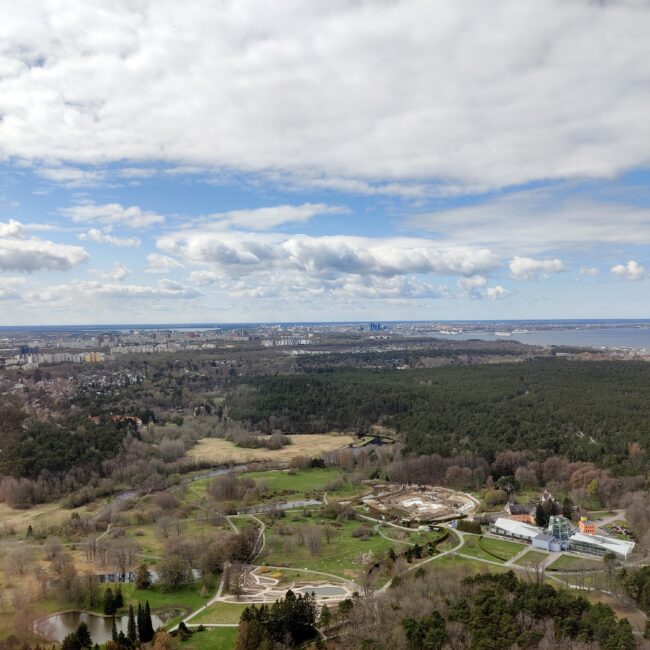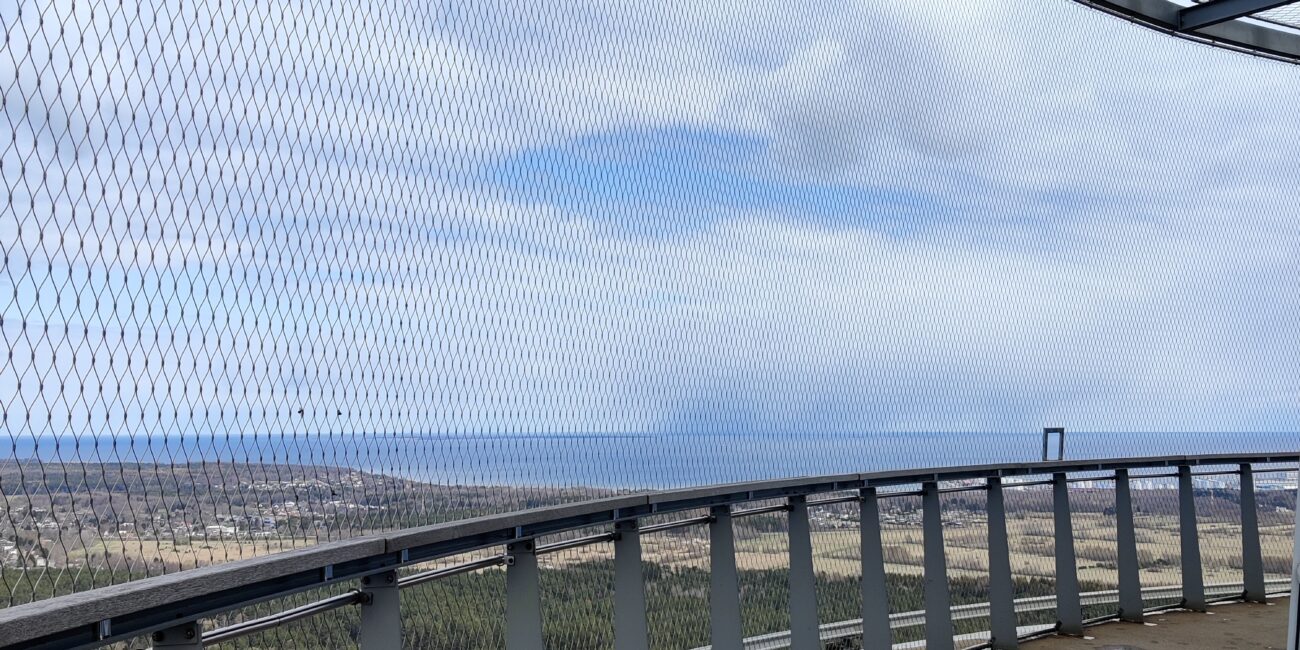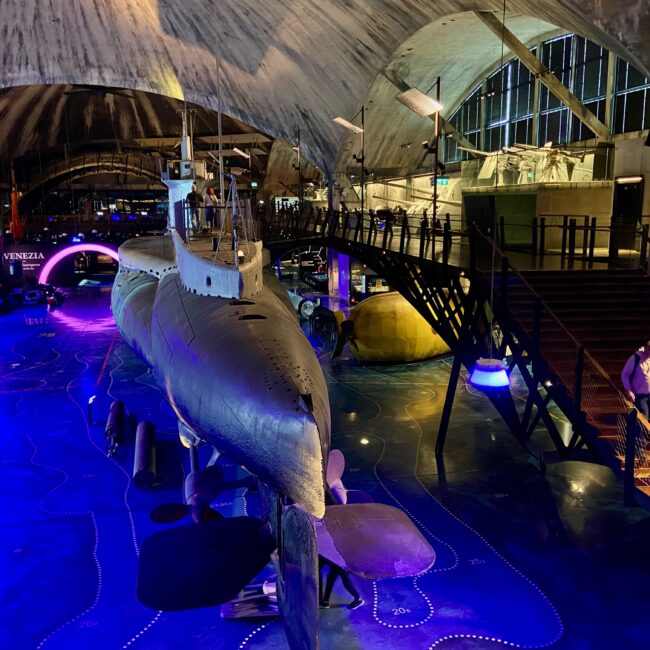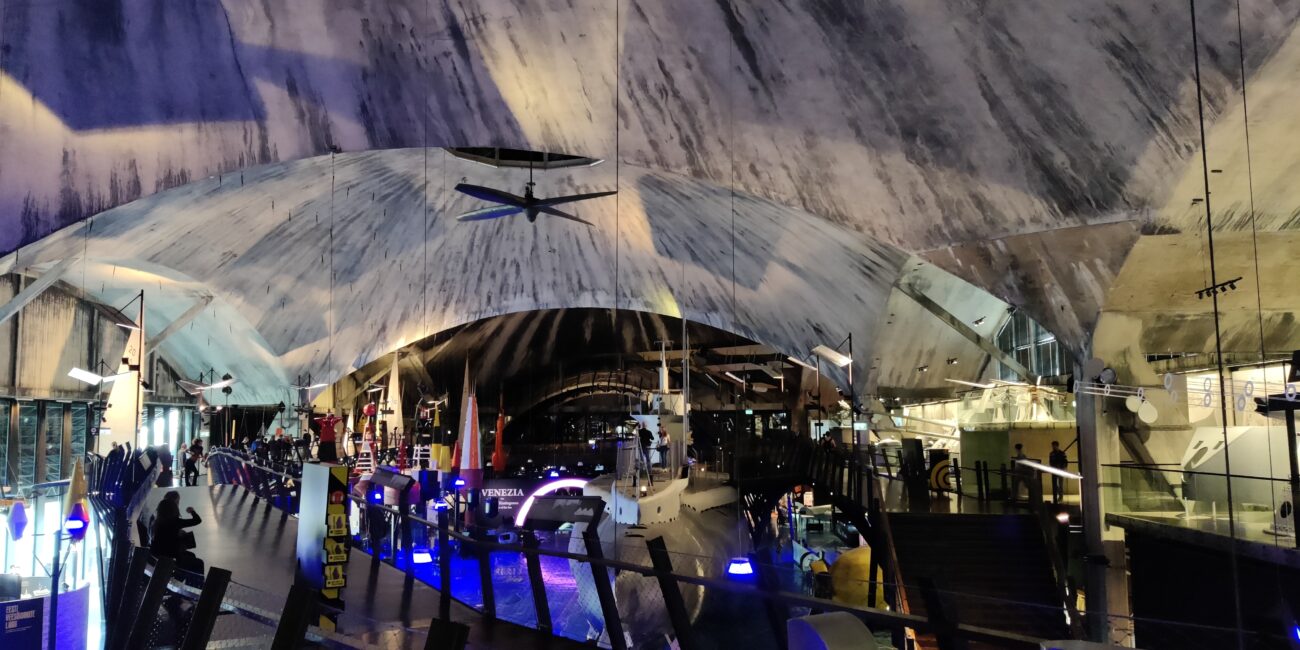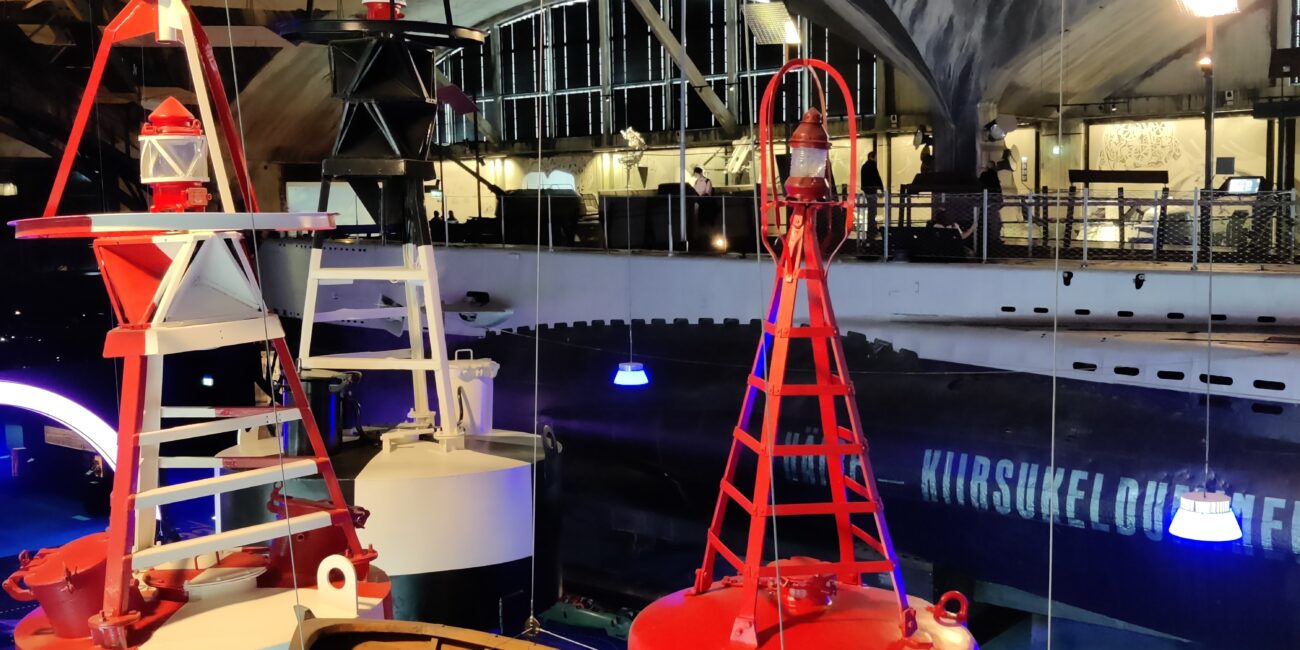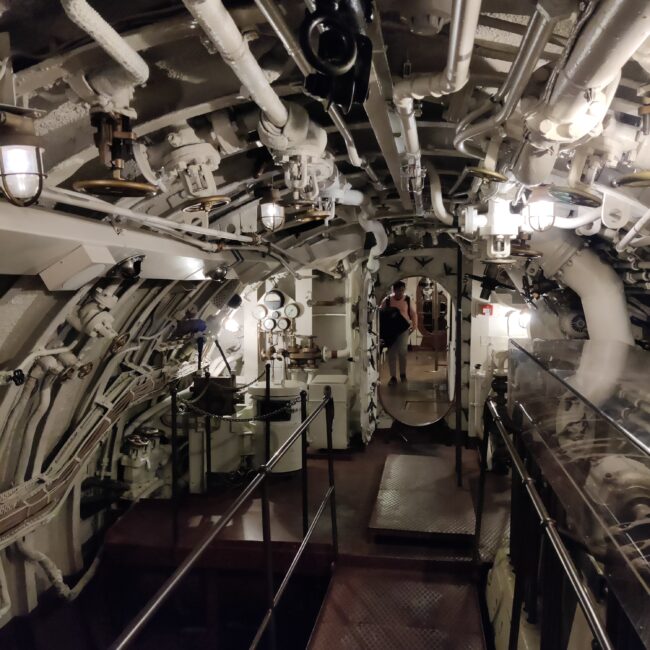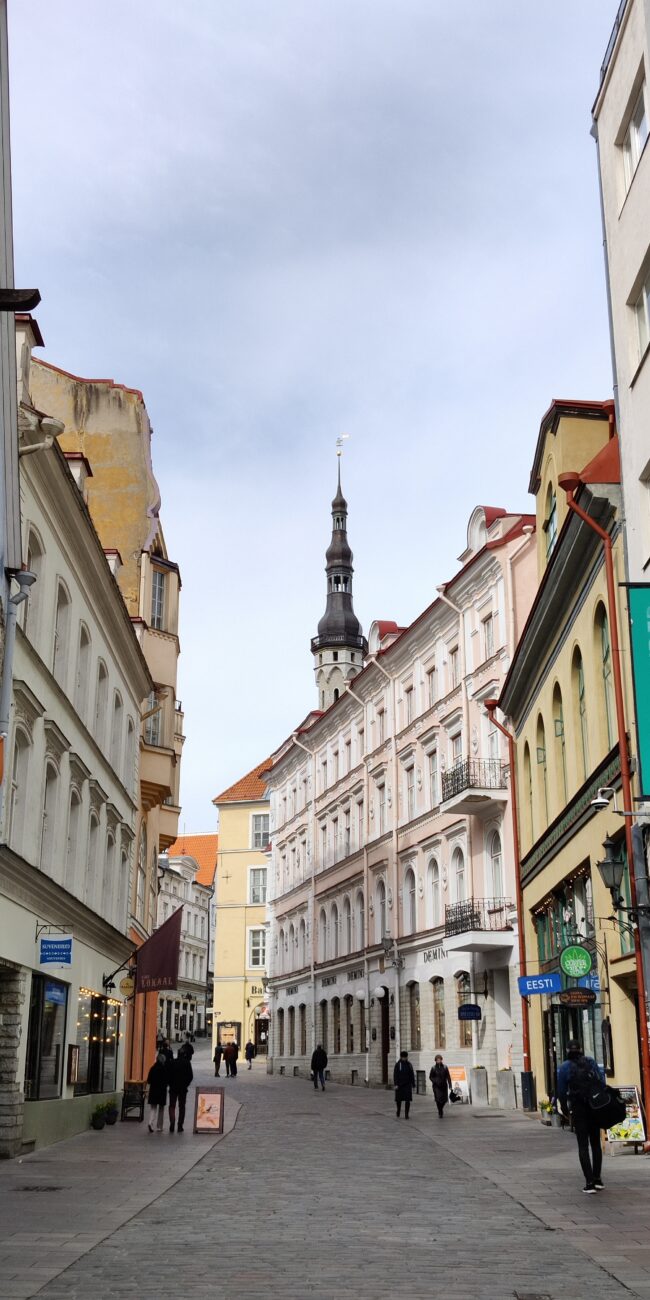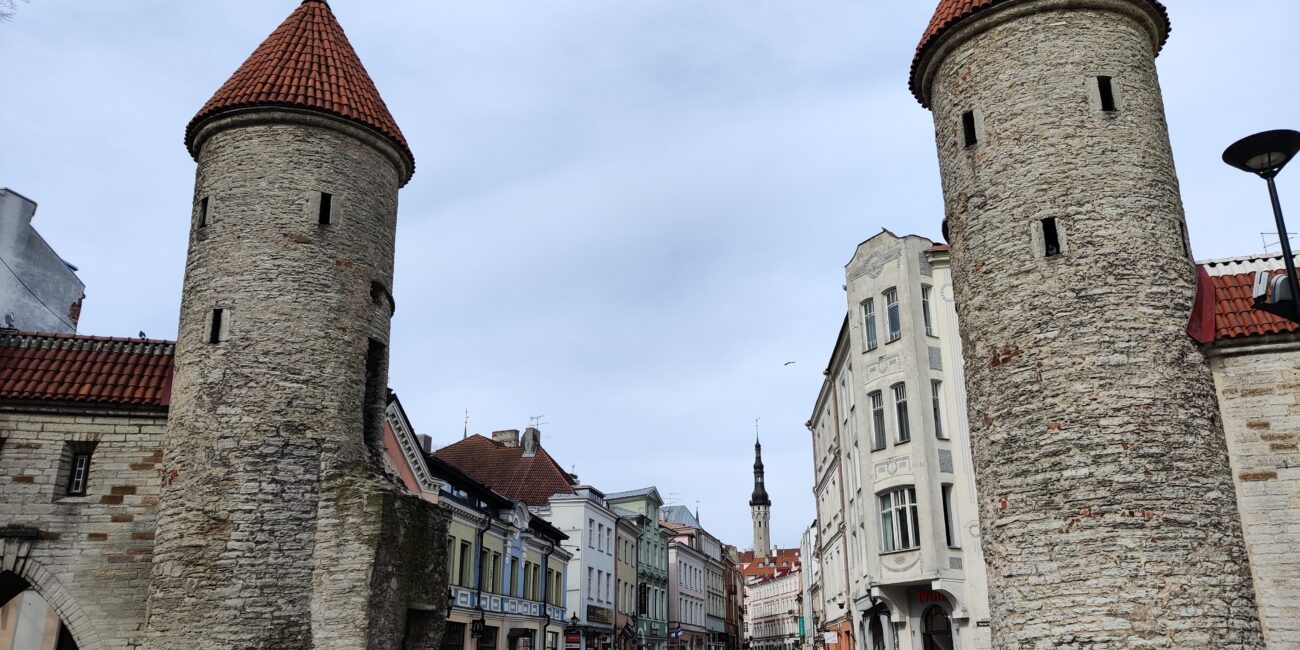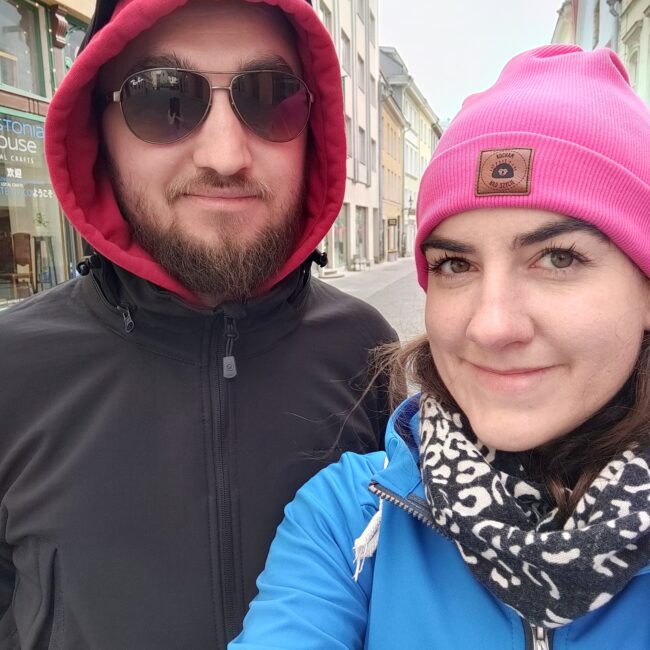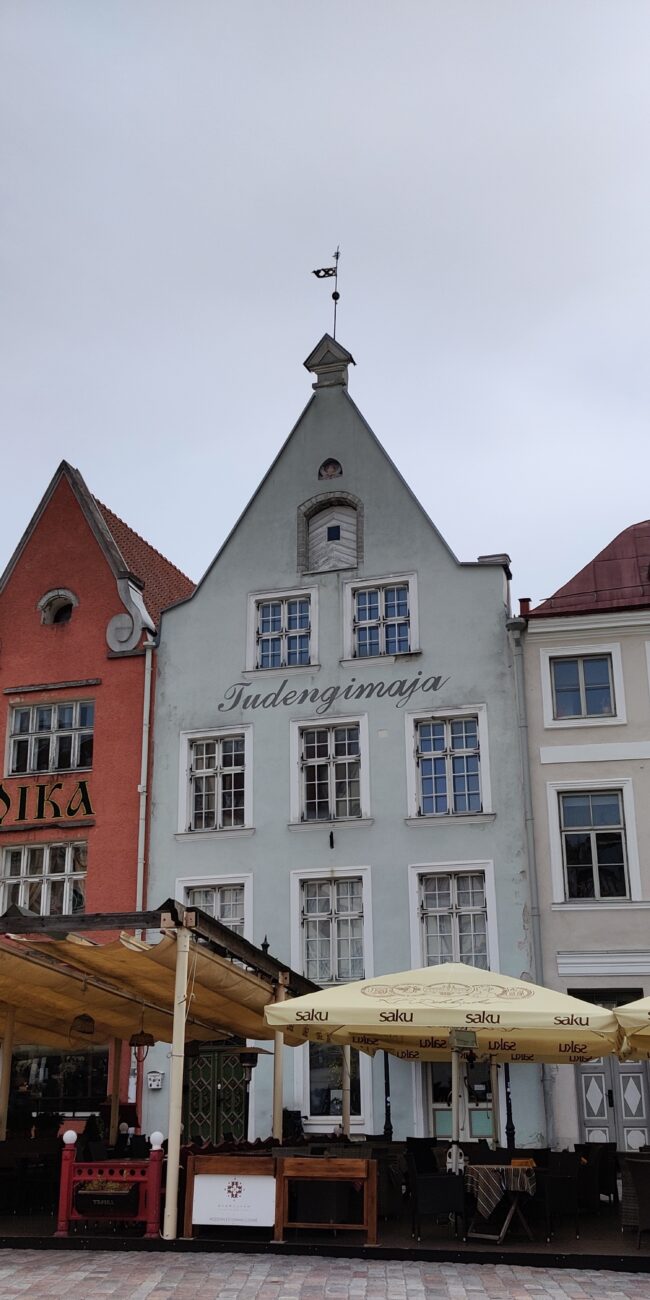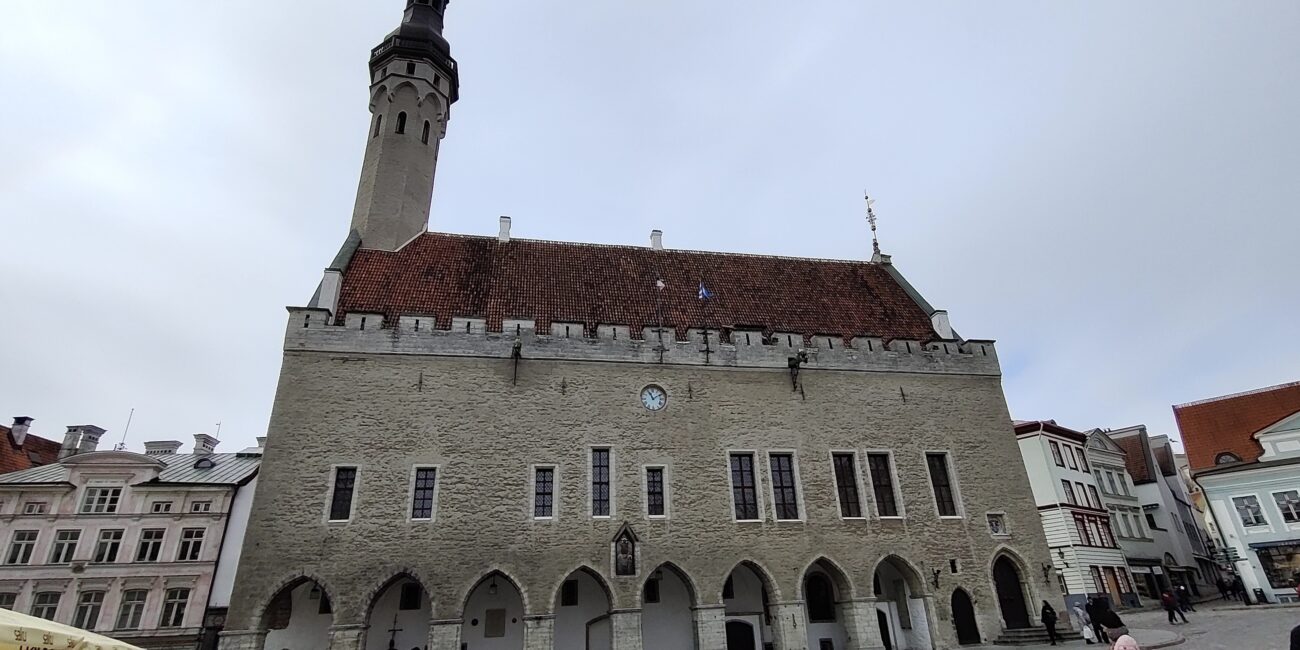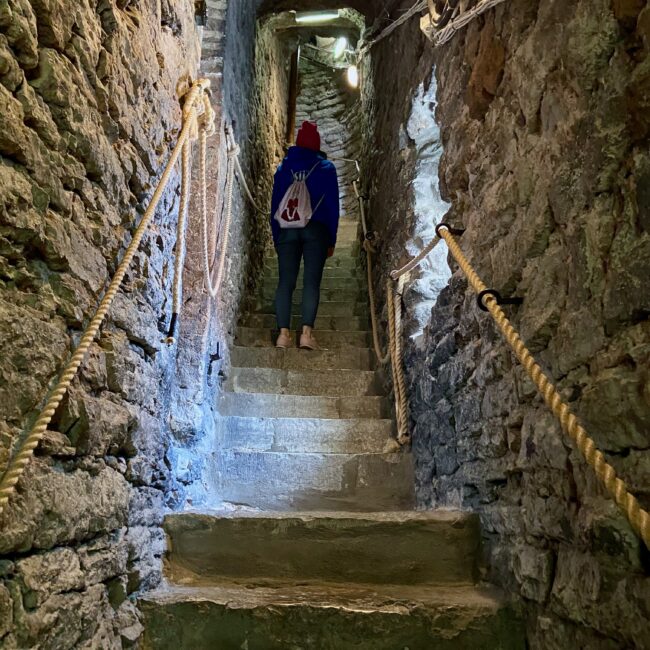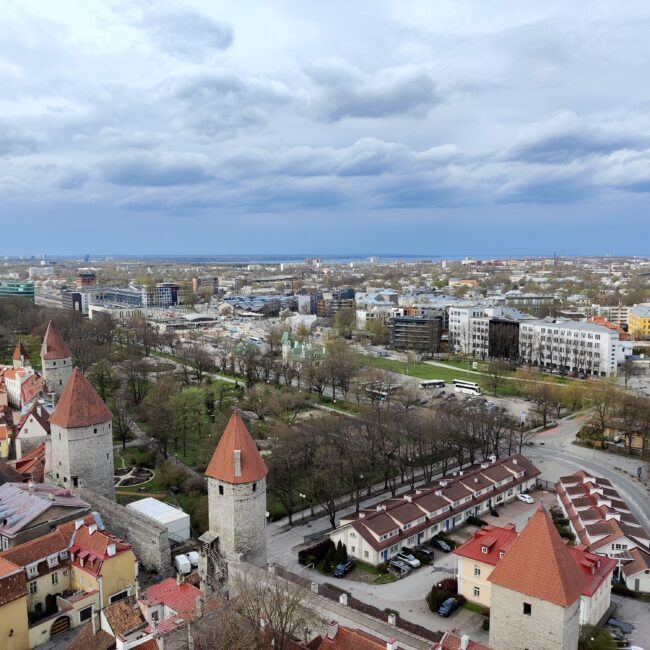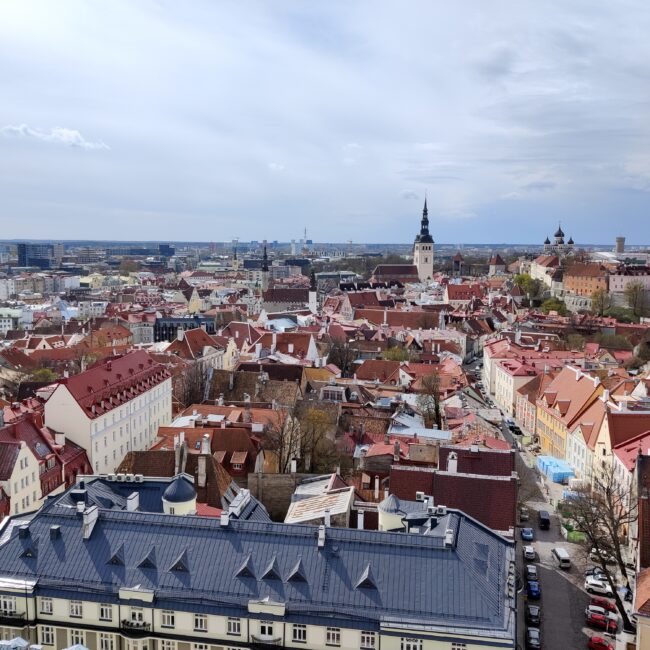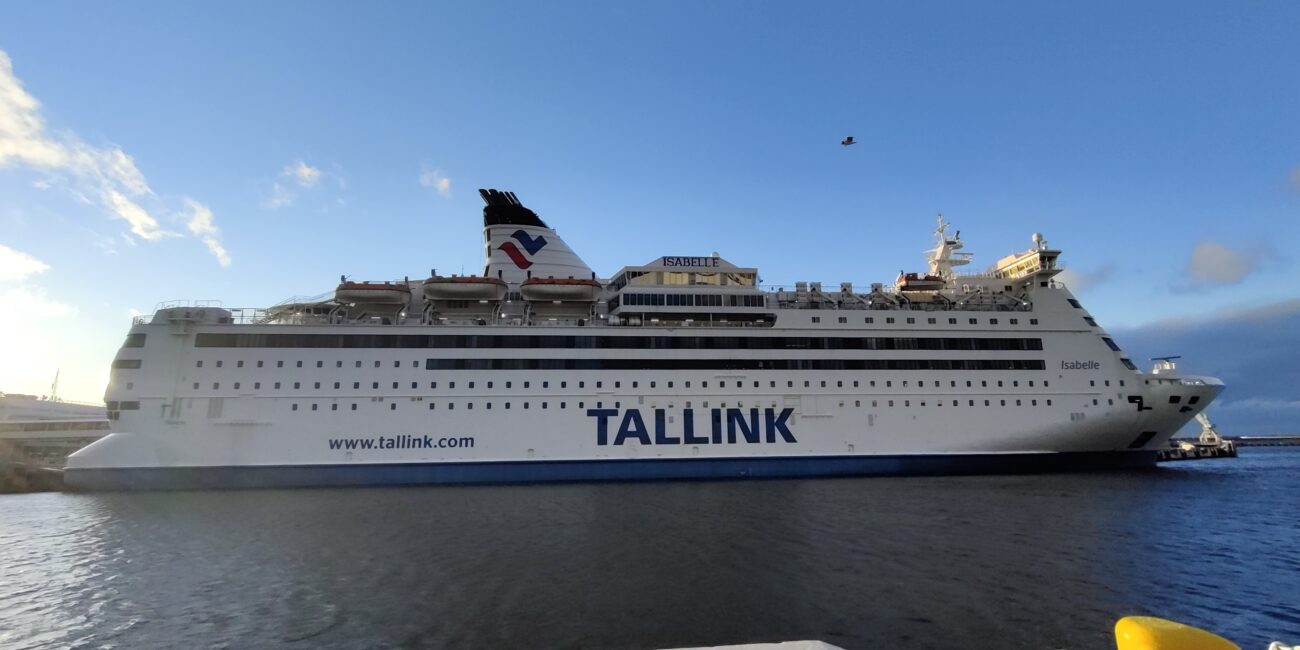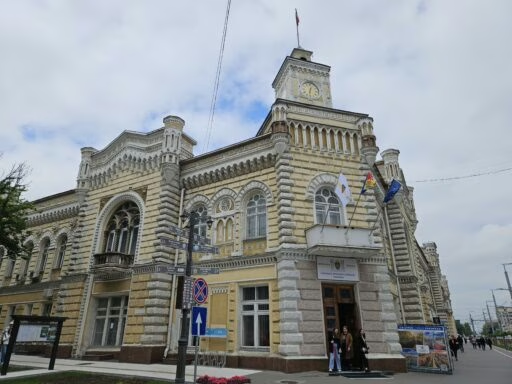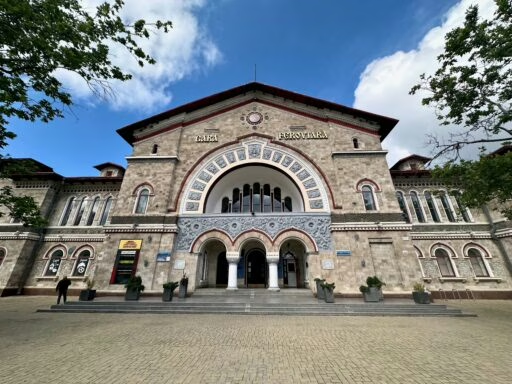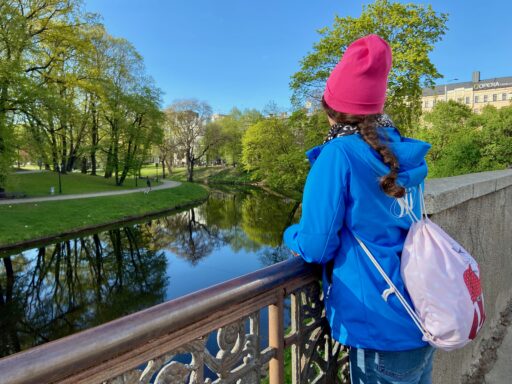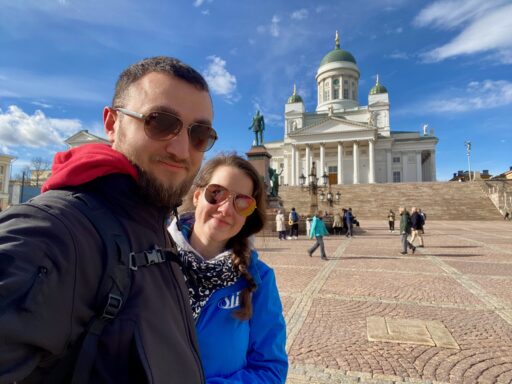This post is also available in:
Polski
Hello! 👋
Our next stop during the May holiday journey was Tallinn – the capital of Estonia, which greeted us not only with its medieval architecture but also with… rain clouds. The weather slightly disrupted our plans, and combined with an unexpected decision to visit a nearby country, it left us with less time to explore Tallinn than we initially planned.
Nevertheless, we managed to see a few key spots, which we’ll share with you in this part of our travel story. 😊
How did we get to Tallinn?
In our previous post, we mentioned that our May holiday trip began in Lithuania. If you want to check out our story from Vilnius, click here. As for Tallinn, we didn’t waste time – the decision was quick: head straight there, passing through Riga. Our stop in Latvia was brief – just enough for a meal at a familiar restaurant with golden arches. With full stomachs and a refueled tank, we continued our journey to reach Tallinn.
We set off around 10:00 AM and arrived in Tallinn around 7:00 PM, taking into account breaks for meals and refueling, as well as unavoidable traffic when entering the city. The drive through Lithuania and Latvia was at a steady pace – neither a race nor a crawl. The roads in these countries don’t encourage dynamic driving, especially since many are single-lane highways with limited opportunities for overtaking.
The roads in the region are generally well-maintained, but outside the main routes, it’s hard to find typical highways or expressways. As a result, the journey was more about leisurely progress than quickly covering distances. Despite these limitations, the drive had its charm – the views outside the window made up for the monotony of the road.
Documents and border crossing
When traveling to Estonia through Lithuania and Latvia, the rules regarding documents and traffic regulations are similar to those across the Schengen Zone. Crossing borders between these countries is seamless, with no passport checks, which is a significant convenience for drivers. However, the lack of border controls doesn’t mean you can travel without the proper documents – the jurisdiction of each country applies wherever you are, so it’s essential to prepare according to the regulations of each state.
Documents to carry with you:
- ID card or passport – these are the basic documents that may be required during possible inspections.
- Driver’s license – Polish driver’s license is recognized in Estonia, Latvia and Lithuania.
- Vehicle registration certificate – must include a valid technical inspection.
- Liability insurance – Polish insurance is recognized in these countries, Green Card is not required.
- Authorization to use the vehicle – if the car is leased, it is a good idea to have a document from the lessor with you, preferably translated into English.
Road conditions in Estonia
Traffic regulations in the Baltics are similar to those in Poland, but local differences are worth noting:
Speed limits:
- Built-up area: 50 km/h
- Outside built-up areas: 90 km/h
- Highways: 90 km/h; in summer up to 110 km/h on some sections
According to the 1968 Vienna Convention on Road Traffic, vehicles must be equipped in accordance with the regulations of their country of registration. This means that a Polish car must carry the mandatory equipment required in Poland, such as a functioning fire extinguisher and a warning triangle.
However, for your own safety and comfort, it is advisable to have additional items that are required in transit countries:
- Reflective vest – mandatory in Lithuania and Latvia; it is also recommended to have one in Estonia.
- First aid kit – required in Latvia; recommended in Lithuania and Estonia.
- Spare bulbs and fuses – recommended in the Baltics.
- Towing cable and spare wheel – useful in case of emergency.
The main roads in Estonia are in excellent condition, often better than those in neighboring countries like Latvia or Lithuania. Less frequented routes might be in moderate technical condition, with occasional potholes, but they are generally passable for passenger cars.
Roads in Tallinn
Tallinn, as the capital of Estonia, boasts a well-developed road infrastructure. Most of the city’s main streets are in excellent condition, with traffic generally flowing smoothly. However, like many major cities, rush hour can bring congestion, especially in central districts.
The city prioritizes sustainable transportation, which is why well-marked bike lanes can be found in many areas – drivers should stay mindful of them.
In the city center, paid parking zones are in effect, with fees varying by location. Parking meters are available, and payments can also be made via mobile apps. It’s important to pay attention to signage, as different zones have different hours during which charges apply.
Numerous private parking lots are available, often providing better conditions than street parking. These are secure options, especially if you plan to leave your car for an extended period.
Paid parking zones in Tallinn
Tallinn has a system of paid parking zones, divided into four main areas:
- Old Town (Vanalinn): The most expensive zone, covering the historic center of the city. Charges €0.10 per minute (€6 per hour). Paid 24 hours a day, including weekends and holidays.
- Downtown (Südalinn): The area surrounding the Old Town. Charged at €0.08 per minute (€4.8 per hour). Paid 24/7, no exceptions.
- Center (Kesklinn): The largest zone in the center of Tallinn. Charges €0.025 per minute (€1.5 per hour). Paid Monday through Friday from 07:00 to 19:00 and on Saturdays from 08:00 to 15:00. On Sundays, parking is free.
- Pirita: Includes parking lots near Pirita beach. Fee is €0.025 per minute (€1.5 per hour). Payable from May 15 to September 15 between 10:00 am and 10:00 pm.
Payment methods:
- Mobile apps: It is possible to pay for parking using apps such as PARGI.EE. The app supports payment with MasterCard and VISA cards and offers an interface in several languages, including English.
- Parking meters: They accept coins in denominations of 10, 20, 50 cents and 1 and 2 euros. They do not give change, so it is advisable to have the amount deducted. Operating instructions are available in Estonian, Russian and English.
- SMS: Available option for users of Estonian mobile operators. Requires sending the appropriate code to a designated number.
Fines for unpaid parking: Fee control is handled by AS Ühisteenused. If the fee is not paid or the paid parking time is exceeded, the vehicle owner may receive a fine, which must be paid within 14 days.
Parking for motorcycles (two-wheeled vehicles) is free in public paid parking zones.
Public transportation
Tallinn has a well-developed public transport network that includes buses, trams, and trolleybuses. Public transport operates daily from 6:00 AM to 11:00 PM, allowing for efficient travel throughout the city.
Tickets can be purchased from ticket machines, R-Kiosk outlets, via the pilet.ee mobile app, or online at tallinn.pilet.ee. It’s worth considering the Ühiskaart (Green City Card), which costs 2 EUR and allows you to load various ticket options. The card is available at sales points such as tourist information centers, R-Kiosk outlets, and selected supermarkets.
For tourists planning intensive sightseeing, the Tallinn Card is a great option. It grants unlimited access to public transportation and free entry to many museums and attractions.
Accommodation
Hestia Hotel Seaport – our base in Tallinn – is a place with its fair share of pros and cons. Let’s start with what we liked: the location. The hotel is literally right next to the ferry terminal, and it’s about a 10-minute walk to the Old Town. Plus, the parking for our car was free, which isn’t always the case in Tallinn.
Now for the downsides, which, unfortunately, stuck with us more than the positives. The beds and pillows? A total disaster. We don’t think we’ve ever slept so uncomfortably – not even in much cheaper motels. Our stay at this hotel left us completely sleep-deprived, and honestly, we weren’t looking forward to returning to the room.
Breakfast? Well, it was included in the price, so we ate it. It wasn’t bad, but nothing to write home about – standard options that ran out quickly, with the staff not in much of a hurry to refill them.
Would we recommend this hotel? We’d say: it depends. If you need a place for just one night, close to the port and with free parking, it will do the job. But for a longer stay? It’s better to look for something more comfortable, as the beds here are a game-changer – unfortunately, in a negative way.
SIM card
During our trip to Tallinn, we used our standard Polish SIM cards, which, thanks to EU regulations, allowed us to make calls, send messages, and use the internet without any additional roaming charges.
If you’re planning a trip near border regions, it’s worth safeguarding against your phone accidentally switching to a Russian network. In such cases, roaming charges can be extremely high. Currently, extra caution is advised when planning travel near the Russian border.
If you anticipate higher internet usage, consider purchasing an Estonian SIM card from providers like Telia Estonia. Alternatively, you can opt for an eSIM, which eliminates the need to swap physical cards. Local data packages are reasonably priced and can be a more convenient option for longer stays.
Food
During our stay in Tallinn, we didn’t focus much on exploring the local cuisine. Instead, we opted for simple dishes served in bars and restaurants that were reasonably priced.
Of course, we couldn’t skip a visit to a fast-food chain – a classic choice when you don’t want to spend too much time deciding what to eat. For those interested in trying something more Estonian, fish dishes are definitely worth exploring, but this time we opted for simplicity and convenience.
Local cuisine
Estonian cuisine is a blend of simplicity and influences from various cultures, including German, Russian, and Scandinavian. The main ingredients include natural products such as potatoes, fish, meat, grains, and root vegetables. This cuisine tends to be hearty and filling, perfectly suited to the region’s colder climate.
- Verivorst: A traditional black pudding served with sauerkraut, especially popular during the holiday season.
- Kiluvõileib: A sandwich made of dark bread, served with marinated herring, onions and dill. This is something for fans of Scandinavian flavors.
- Mulgikapsad: A dish consisting of braised sauerkraut with pork and potatoes, typical of rural cuisine.
- Sült: The Estonian equivalent of meat jelly, served as an appetizer.
Due to its coastal location, fish plays a significant role in Estonian cuisine – from herring to smoked salmon. Additionally, Estonian cuisine has its roots in rural traditions, which is evident in its simple yet hearty dishes.
Exchange office or ATM?
During our stay in Tallinn, we didn’t need to withdraw any cash – as usual. In Estonia, payment cards are accepted almost everywhere, from shops and restaurants to parking meters and ticket machines.
If you do need to withdraw cash, the best option is to use a local ATM with a currency card. Look for ATMs from local banks like SEB or Swedbank, as they typically offer better withdrawal terms. When withdrawing cash, always opt for the no-conversion option to avoid unfavorable exchange rates.
Safety
Tallinn is a city where you can feel safe, whether during daytime strolls or evening outings. However, as in any major city, it’s wise to take basic precautions.
Estonians are generally friendly towards tourists, although they might come across as slightly reserved. If needed, most residents, especially in Tallinn, speak English, making communication much easier.
Places we have seen
During our stay in Tallinn, despite the uncooperative weather, we managed to visit several key sites worth seeing in the Estonian capital.
Tallinn TV Tower
The Tallinn TV Tower is the tallest structure in Estonia, standing at 314 meters. It was built in 1980 for the Moscow Olympics. At a height of 170 meters, there’s an observation deck that offers stunning panoramic views of the city and its surroundings. Visitors can also enjoy local specialties at the on-site restaurant.
Estonian Maritime Museum (Lennusadam)
The museum is housed in historic seaplane hangars and showcases Estonia’s rich maritime history. Among the exhibits, you can see the submarine “Lembit” from 1936, various ships, airplanes, and interactive displays for both children and adults. It’s a fascinating destination for history and technology enthusiasts.
Old Town
Tallinn’s Old Town is one of the best-preserved medieval centers in Europe and is a UNESCO World Heritage Site. The central point is Town Hall Square, featuring an impressive Gothic town hall from the 14th century. Surrounding the square are charming townhouses, cafés, and restaurants, all contributing to a unique and inviting atmosphere.
St. Olaf Church
St. Olaf’s Church, with its distinctive 124-meter-high tower, was once the tallest building in the world. The tower offers a stunning view of the city and the port. The church has a rich history dating back to the 13th century and serves as an important landmark in Tallinn.
Tallinn Port
The port of Tallinn is one of the most important on the Baltic Sea, connecting Estonia with Finland, Sweden, and other countries. Around the port, you’ll find numerous restaurants, shops, and a promenade, perfect for a stroll with views of the sea and docked ships.
Spontaneous change of plans – we are going to Helsinki
Unpredictable weather and strong winds led us to spice up our stay in Tallinn a bit. We came up with the idea of a one-day trip to nearby Helsinki – with a ferry so close, why not take advantage of it? 😊
For Jadzia, it was her first ferry trip, making it a perfect opportunity to combine a new experience with exploring Finland’s capital. How did our short visit go, and what did we manage to see in Helsinki? You can find all the details in a separate article – click here to check out our quick tour recommendations in Helsinki! 🇫🇮✨
Let’s continue on the road – direction: Latvia
Did Tallinn captivate us? It definitely made a great first impression. Although we didn’t have time for a full exploration, the city welcomed us with its positive vibe, friendly people, and a sense of calm. The port area immediately reminded us of Poland’s Tricity – a place we visit at least twice a year.
What else? Stress-free roads, courteous drivers, and an overall sense of safety. Tallinn has definitely earned a spot on our list of places we want to revisit to explore more thoroughly. But for now, it’s time to hit the road – next stop, Latvia, and a visit to Riga. You can read all about our experience in Latvia’s capital in a separate article. Click here to check out our impressions of Riga! ✨

